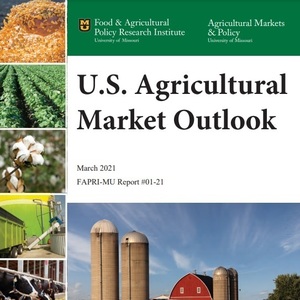FAPRI predicts growth in biomass-based diesel production

April 5, 2021
BY Erin Voegele
The University of Missouri’s Food and Agricultural Policy Research Institute in mid-March released its 2021 U.S. Agricultural Market Outlook, predicting U.S. biomass-based diesel production will reach 3.3 billion gallons in 2026.
The report notes that the COVID-19 pandemic upended agricultural markets over the past year. Looking ahead, FAPRI said the outlook for agriculture “is uncertain, but certainly more optimistic than it was a few months ago.”
Advertisement
While ethanol production fell in 2020 due to the impacts of the COVID-19 pandemic, FAPRI notes that the production of biomass-based diesel actually increased slightly despite the pandemic. Growth is expected to continue, with production exceeding 3 billion gallons next year and reaching 3.3 billion gallons in 2026. Production is currently expected to plateau after that time through the 2030 projection period.
According to FAPRI, the biodiesel blenders credit and increasing Renewable Fuel Standard requirements for biomass-based diesel beyond 2021 are expected to lead to a quick recovery in biodiesel net returns. Moderating feedstock costs are expected to lead to a rise in nominal net returns for biomass-based diesel production.
Methyl-ester derived from soybean oil and renewable diesel each make up approximately 35 percent of total domestic biodiesel production over the projection period, according to FAPRI. Methyl-ester from corn oil and other fats and oils are expected to make up the remaining share of biomass-based diesel.
Advertisement
According to the report, the U.S. is expected to remain a net biodiesel importer through 2030, but by a small margin. Biomass-based diesel imports are expected to average 201 million gallons per year through the projection period, with biodiesel exports averaging approximately 118 million gallons.
A full copy of FAPRI’s 2021 U.S. Agricultural Market Outlook can be downloaded from the University of Missouri website.
Related Stories
The Michigan Advanced Biofuels Coalition and Green Marine are partnering to accelerating adoption of sustainable biofuels to improve air quality and reduce GHG emissions in Michigan and across the Great Lakes and St. Lawrence Seaway.
The USDA reduced its outlook for 2024-’25 soybean oil use in biofuel production in its latest World Agricultural Supply and Demand Estimates report, released April 10. The outlook for soybean oil pricing was revised up.
Sen. Roger Marshall, R-Kan., and Rep. Marcy Kaptur, D-Iowa, on April 10 reintroduced legislation to extend the 45Z clean fuel production credit and limit eligibility for the credit to renewable fuels made from domestically sourced feedstocks.
Representatives of the U.S. biofuels industry on April 10 submitted comments to the U.S. Department of Treasury and IRFS providing recommendations on how to best implement upcoming 45Z clean fuel production credit regulations.
EIA reduces production forecasts for biobased diesel, increases forecast for other fuels, including SAF
The U.S. Energy Information Administration reduced its 2025 forecasts for renewable diesel and biodiesel in its latest Short-Term Energy Outlook, released April 10. The outlook for “other biofuel” production, which includes SAF, was raised.
Upcoming Events










